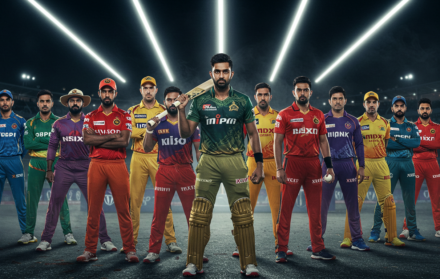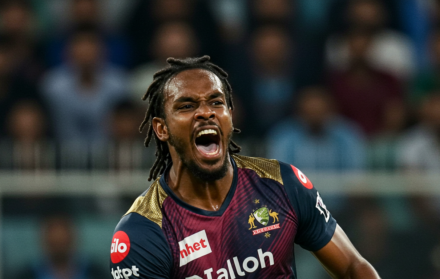
The Role of The Bowling Coach in Cricket
Cricket is a popular sport that captivates fans worldwide, and at the heart of this game is the art of bowling. The bowling coach plays a crucial role in shaping the players, focusing on improving their skills, fitness, and strategy. This introduction aims to explore the significance of the bowling coach in cricket, highlighting their impact on developing a player’s career from the basics to advanced techniques.
Firstly, learning the basics of cricket bowling is essential for every player. It’s the foundation upon which their entire career is built. Coaches spend a lot of time teaching young bowlers about the right way to hold the ball, run up, and deliver it. They also emphasize the importance of the follow-through after bowling, which is crucial for both performance and preventing injuries. Players learn about different types of deliveries, like the yorker and googly, under their coach’s guidance, which can be tricky but are important weapons in a bowler’s arsenal. To get a good start, understanding these basics is crucial, as detailed in articles that cover mastering the basics, the importance of the follow-through, and understanding complex deliveries like the yorker and googly.
As bowlers progress, their training becomes more specialized. Coaches introduce specific exercises to improve fast bowling techniques, endurance and stamina, alongside workouts designed to enhance your bowling speed. This physical conditioning is paired with drills focused on refining bowling techniques and skills, such as those for leg spin bowling and mastering specific deliveries like the yorker and bouncer.
Understanding and exploiting the playing conditions is another critical area where coaches play a vital role. They teach bowlers how weather and pitch conditions affect the game, guiding them on how to adapt their strategies accordingly. This includes how to bowl in different weather conditions and on various pitch types like bowling on flat and green pitches.
Advanced techniques and deep knowledge about the game are also crucial. Coaches help players understand the differences between spin and seam bowling, the importance of finger position in spin bowling, and the science behind swing bowling.
Mental and tactical skills are just as important as physical fitness and technique. Coaches work on developing a strong mental approach, maintaining consistency, and countering aggressive batsmen.
Lastly, the role of technology and analysis in cricket has grown significantly, with video analysis playing a key role in improving bowling techniques. Coaches utilize technology to help bowlers understand their own styles better and learn how to exploit opponents’ weaknesses.
Responsibilities of a Bowling Coach

Bowling coaches play a crucial role in shaping the performance of cricketers on the field. In this section, we’ll uncover the responsibilities of a bowling coach, exploring various aspects like technique development, skill enhancement, performance analysis, strategic planning, and even fitness and injury prevention.
Get ready to dive into the world of cricket coaching, where these dedicated mentors help bowlers reach their full potential, providing insights and guidance to conquer the challenges of the game.
Technique Development
Technique development is a crucial aspect of a bowling coach’s role in cricket. They guide players in honing their bowling skills and improving their performance. Here are some steps involved in technique development:
- Analyze the bowler’s current technique and identify areas for improvement.
- Provide personalized guidance on technical adjustments and modifications.
- Give hands-on demonstrations and drills to help bowlers understand and implement the required changes.
- Monitor progress and offer feedback to ensure proper technique execution.
- Utilize video analysis tools to provide visual feedback and aid in technique refinement.
Fact: Effective technique development can significantly enhance a bowler’s accuracy, speed, and consistency, contributing to their overall success on the cricket field.
Skill Enhancement
Skill enhancement is an indispensable aspect of a bowling coach’s role in cricket. They have a pivotal role in improving the skills and techniques of the bowlers. Here are some ways in which a bowling coach helps in skill enhancement:
- Identifying areas of improvement through video analysis and feedback.
- Designing customized training programs to target specific skills.
- Organizing practice sessions focusing on perfecting bowling techniques.
- Providing guidance on mastering various bowling variations and strategies.
- Conducting drills and simulations to simulate match-like scenarios for skill development.
Fact: Did you know that skill enhancement through coaching has been shown to significantly improve a bowler’s performance and increase their chances of success on the cricket field?
Performance Analysis
Performance Analysis is an integral part of a bowling coach’s responsibilities in cricket. It plays a crucial role in evaluating the performance of bowlers in various aspects of their game. This detailed analysis allows the coach to identify the strengths and weaknesses of the bowlers, enabling them to provide targeted feedback and guidance in order to enhance their performance.
In order to conduct a comprehensive Performance Analysis, a performance analysis table can be utilized. This table may consist of several columns, including bowling statistics such as the number of wickets taken and the economy rate, delivery types such as yorkers and bouncers, accuracy in terms of line and length, bowling variations such as swing and spin, and fielding contributions like catches and run-outs.
By carefully examining these metrics, the bowling coach can successfully tailor training sessions and strategies to address specific areas for improvement and ultimately enhance the overall performance of the team on the field.
Following a pro-tip, it is advisable to regularly track and analyze these specific performance metrics. This practice assists in identifying trends and patterns, thereby enabling the coach to make well-informed decisions and implement effective strategies for the development of the players.
Strategic Planning
Strategic planning is an essential responsibility of a bowling coach in cricket, as it plays a vital role in achieving long-term goals and ensuring success. Here is a step-by-step guide on how a bowling coach can effectively incorporate strategic planning:
- Setting goals: To begin, the coach must outline clear objectives for the team’s bowling performance and pinpoint key areas that require improvement.
- Analyzing opponents: It is crucial for the coach to thoroughly assess the strengths and weaknesses of the opposing team, as this knowledge will aid in developing efficient bowling strategies.
- Planning match tactics: Creating game plans that are tailored to specific opponents and conditions becomes easier for the coach by taking into account factors such as pitch behavior and the players’ individual strengths.
- Developing bowling combinations: The coach’s responsibility is to carefully analyze the skills, variations, and compatibility of bowlers in order to determine the most effective combinations.
- Implementing game plans: It is important for the coach to effectively communicate strategic plans to the bowlers, ensuring that they fully comprehend their roles and responsibilities.
- Evaluating and adjusting: Continuous assessment of the strategies’ effectiveness by the coach is crucial. Based on match situations and results, necessary adjustments are made to ensure optimal performance.
By giving due attention to strategic planning, a bowling coach can unlock the maximum potential of the bowling unit and contribute significantly to the overall success of the team.
Fitness and Injury Prevention
Fitness and injury prevention are two crucial aspects that play a vital role in a cricket bowling coach’s role. They are essential in ensuring that bowlers are physically prepared and capable of performing at their utmost.
- Developing fitness plans tailored specifically to meet the needs of the bowlers, which incorporate strength training, endurance exercises, and flexibility training.
- Instructing proper warm-up and cool-down techniques to effectively prevent injuries.
- Offering guidance on correct bowling techniques to minimize strain on the body and decrease the chances of repetitive stress injuries.
- Monitoring the workload of the bowlers to prevent overexertion and effectively manage fatigue levels.
- Collaborating closely with the team physiotherapist to address any existing injuries or ongoing rehabilitation needs.
By making fitness and injury prevention a priority, a bowling coach can aid bowlers in maintaining their fitness levels and performing at their best while minimizing the risk of injuries.
Qualities of an Effective Bowling Coach
An effective bowling coach in cricket possesses various qualities that make them an invaluable asset to the team. From strong communication skills to technical expertise, analytical thinking, motivational abilities, and adaptability, each of these sub-sections will delve into the specific traits required to excel in this role. So, let’s explore what it takes to be a top-notch bowling coach in the game of cricket!
Strong Communication Skills
Strong communication skills are essential for a bowling coach to effectively convey instructions and feedback to bowlers.
- Clear and concise: A coach should have the ability to communicate technical aspects of the game in a way that is easy for bowlers to understand.
- Active listening: By actively listening to bowlers, a coach can gain a better understanding of their concerns and provide appropriate guidance.
- Empathy: Establishing a rapport with bowlers is crucial for effective communication and building trust.
- Positive reinforcement: Encouraging and motivating bowlers through positive feedback can greatly enhance their confidence and performance.
- Adaptability: A coach should be flexible in their communication style, adapting it to suit the needs and preferences of different individuals.
By mastering strong communication skills, a bowling coach can create a supportive and productive environment for players to excel.
Technical Expertise
Technical expertise is a crucial qualification for a bowling coach in cricket. They should possess a deep understanding of the technical aspects of bowling, including grip, body position, run-up, and release. Their knowledge of different bowling styles, such as pace bowling, spin bowling, or swing bowling, is essential in guiding players to refine their techniques.
The coach’s technical expertise enables them to identify flaws in a player’s technique and provide specific drills and exercises to address these issues. They play a vital role in teaching players the correct mechanics and fundamentals to optimize their performance.
Analytical Thinking
Analytical thinking is a crucial quality for a bowling coach in cricket. This skill enables them to analyze the game, assess the strengths and weaknesses of players, and devise effective strategies. By carefully studying the opponents and the dynamics of the match, an analytical bowling coach can make informed decisions that can lead to success.
They can identify patterns, spot trends, and make adjustments to maximize the team’s performance. Analytical thinking also helps in evaluating player performances, identifying areas for improvement, and providing targeted feedback. This methodical approach enhances the effectiveness of the coach and contributes to the overall development of the team.
Fun Fact: Did you know that analytical thinking can improve problem-solving skills in various aspects of life, not just in sports coaching?
Motivational Abilities
A bowling coach in cricket plays a crucial role in boosting the performance of players and harnessing their motivational abilities. The coach’s motivational abilities are vital in enhancing the team’s spirit and creating a positive environment. Here are some effective steps a bowling coach can take to naturally motivate players:
- Develop a strong rapport with players to comprehend their individual motivations and goals.
- Establish a supportive and encouraging atmosphere where players feel valued and motivated.
- Celebrate small victories and achievements to maintain high morale.
- Set attainable targets and goals for players, pushing them to improve their skills.
- Offer constructive feedback and guidance to help players overcome obstacles or setbacks.
- Inspire players through personal anecdotes and stories of success.
- Promote teamwork and collaboration among players to foster camaraderie.
- Lead by example by displaying a positive attitude and passion for the game.
- Organize team-building activities and events to strengthen bonds and boost motivation.
- Consistently communicate the importance of each player’s role and contribution to the team’s success.
By employing these motivational techniques, a bowling coach can inspire players to perform at their best and achieve success on and off the cricket field.
Adaptability
A successful bowling coach in cricket needs to possess the quality of adaptability in order to effectively train and guide players.
Adapt to various learning styles: Recognize that different players have different learning preferences and adjust coaching methods accordingly.
Adapt to players’ strengths and weaknesses: Tailor coaching strategies to cater to individual players’ abilities and areas of improvement.
Adapt to changing game scenarios: Stay updated with the latest trends and techniques in the sport and adapt coaching strategies accordingly.
Adapt to different team dynamics: Understand and work well with different personalities within the team to foster a positive and cohesive environment.
By being adaptable, a bowling coach can maximize the potential of each player, contribute to their development, and ultimately enhance the team’s performance.
Collaboration with Other Coaching Staff

Collaboration with other coaching staff is a vital aspect of the role of a bowling coach in cricket. Let’s explore how the bowling coach’s relationship with the head coach, coordination with batting and fielding coaches, and interaction with support staff contribute to the team’s overall performance.
From aligning strategies to fostering seamless teamwork, this section unravels the dynamic collaborations that shape a successful cricketing unit. So, let’s dive in and discover the critical role played by strong inter-coach partnerships in the realm of cricket coaching.
Relationship with Head Coach
The relationship between a bowling coach and the head coach in cricket is crucial for the success of the team. They must collaborate closely to guarantee a cohesive coaching approach.
Key considerations for fostering a positive relationship include effective communication, mutual respect, and sharing a common vision for the team’s bowling strategy. The bowling coach should actively engage with the head coach in strategic planning, player selection, and performance analysis.
Regular discussions and feedback sessions between the two coaches can effectively address any issues and align coaching methods. This collaborative approach ensures that the team’s bowling efforts are well-coordinated and maximizes the potential for success on the field.
Coordination with Batting and Fielding Coaches
Effective coordination with batting and fielding coaches is crucial for a bowling coach in cricket. This collaboration ensures a comprehensive approach to the team’s performance and development.
- Plan Together: The bowling coach should closely cooperate with the batting and fielding coaches to devise strategies that complement each other. This coordination helps in creating cohesive game plans.
- Training Sessions: Coordination ensures that training sessions are well-rounded and cover all aspects of the game. This includes integrating bowling drills with batting and fielding exercises.
- Player Analysis: By coordinating with batting and fielding coaches, the bowling coach can gain insights into players’ strengths and weaknesses. This knowledge helps in developing tailored training programs for each player.
- Team Spirit: Collaboration fosters team spirit and unity, bringing together the bowling, batting, and fielding units. This unity enhances communication and performance on the field.
By closely collaborating with the batting and fielding coaches, the bowling coach can contribute to the holistic development of players, leading to improved team performance.
Interaction with Support Staff
Interacting with support staff is a vital aspect of a bowling coach’s role in cricket. It entails actively collaborating with other coaching staff members to ensure a cohesive approach to player development.
This collaborative effort includes establishing a strong relationship with the head coach, coordinating with batting and fielding coaches, and actively engaging with the support staff. By closely working together, the coaching staff can develop a comprehensive strategy and provide the necessary support to the players.
Effective communication and teamwork among support staff members greatly contribute to fostering a well-rounded coaching environment, thereby enhancing the overall performance of the bowling team.
Importance of a Bowling Coach in Player Development

Unlocking the full potential of bowlers requires more than just raw talent. In the realm of cricket, the role of a bowling coach holds immense significance in player development. From honing bowling techniques to enhancing skills, providing valuable mentoring and guidance, and offering much-needed psychological support, this section delves into the importance of a bowling coach.
So, if you’re curious about the crucial role a bowling coach plays in shaping the careers of cricketers, buckle up for an insightful exploration ahead.
Improving Bowling Techniques
To enhance their bowling skills in cricket, bowlers can follow these steps:
- Focus on the fundamentals: Dedicate time to perfecting the basics such as grip, run-up, and release to establish a strong foundation.
- Develop a consistent action: Refine and practice your bowling action consistently to achieve precision and accuracy.
- Improve your run-up: Enhance your approach to the bowling crease, maintaining both speed and balance.
- Vary your pace and length: Adapt to different game situations by practicing bowling at various speeds and lengths.
- Work on your variations: Master a range of deliveries including yorkers, bouncers, and slower balls to keep the batsmen guessing.
An excellent illustration of a bowler who successfully improved his techniques is Jasprit Bumrah from India. He dedicated countless hours to refining his bowling action, resulting in a unique sling-arm technique that has made him one of the most challenging bowlers to face in modern cricket. Bumrah’s unwavering commitment to improving his technique has been rewarded with numerous wickets and accolades.
Enhancing Bowling Skills
To improve and enhance the bowling skills of a player, a bowling coach can implement a series of steps. These steps include:
- Assessing the current capabilities of the player and identifying areas that need improvement to enhance their bowling skills.
- Developing personalized training programs that focus on different aspects of bowling, such as technique, accuracy, speed, and variations.
- Using video analysis to detect any technical flaws and suggesting corrective measures to overcome them and enhance bowling skills.
- Conducting regular practice sessions and drills to sharpen specific skills, including swing, seam, and spin, and ultimately enhance their overall bowling capabilities.
- Integrating match simulations and situational training to improve decision-making abilities and adaptability while bowling.
- Working closely with the player to establish performance goals and continuously tracking progress to ensure consistent improvement in their bowling skills.
- Providing feedback and ongoing guidance during practice sessions and matches, aiming to refine both skills and strategies.
By incorporating these comprehensive steps, a bowling coach can effectively enhance the bowling skills of players. This, in turn, will contribute to their overall development and success in the sport of cricket.
Mentoring and Guidance
Mentoring and guidance are crucial for the development of a cricketer under the supervision of a bowling coach. Here are some key aspects related to this
- Technical Mentoring: A bowling coach provides guidance on bowling techniques, helping players refine their skills and improve their bowling actions.
- Strategic Guidance: The coach helps players develop bowling strategies, including planning for different game situations and opposition batsmen.
- Performance Mentoring: The coach analyzes players’ performance, identifies areas of improvement, and provides feedback and guidance for enhancing their bowling skills.
- Psychological Support: The bowling coach offers guidance on handling pressure, building confidence, and maintaining mental resilience on and off the field.
- Personalized Career Planning: The coach assists players in setting career goals, creating individual development plans, and guiding them through their cricketing journey.
Psychological Support
Psychological Support is an essential component of a bowling coach’s role in cricket. Here are several steps that a bowling coach can take to naturally provide Psychological Support to players:
- Establishing an open and supportive relationship with players to build trust and rapport.
- Assisting players in developing mental resilience and effectively coping with the pressures of the game.
- Guiding players in setting realistic goals and ensuring continuous motivation.
- Offering constructive criticism and valuable feedback to help players enhance their performance.
- Teaching players techniques to manage stress and anxiety when facing high-pressure situations.
- Aiding players in developing strategies to maintain focus and confidence.
- Supporting players in overcoming setbacks and failures, enabling them to bounce back stronger.
- Cultivating a positive and encouraging team environment that promotes players’ well-being.
- Providing guidance and resources for mental health and well-being beyond the realm of cricket.





